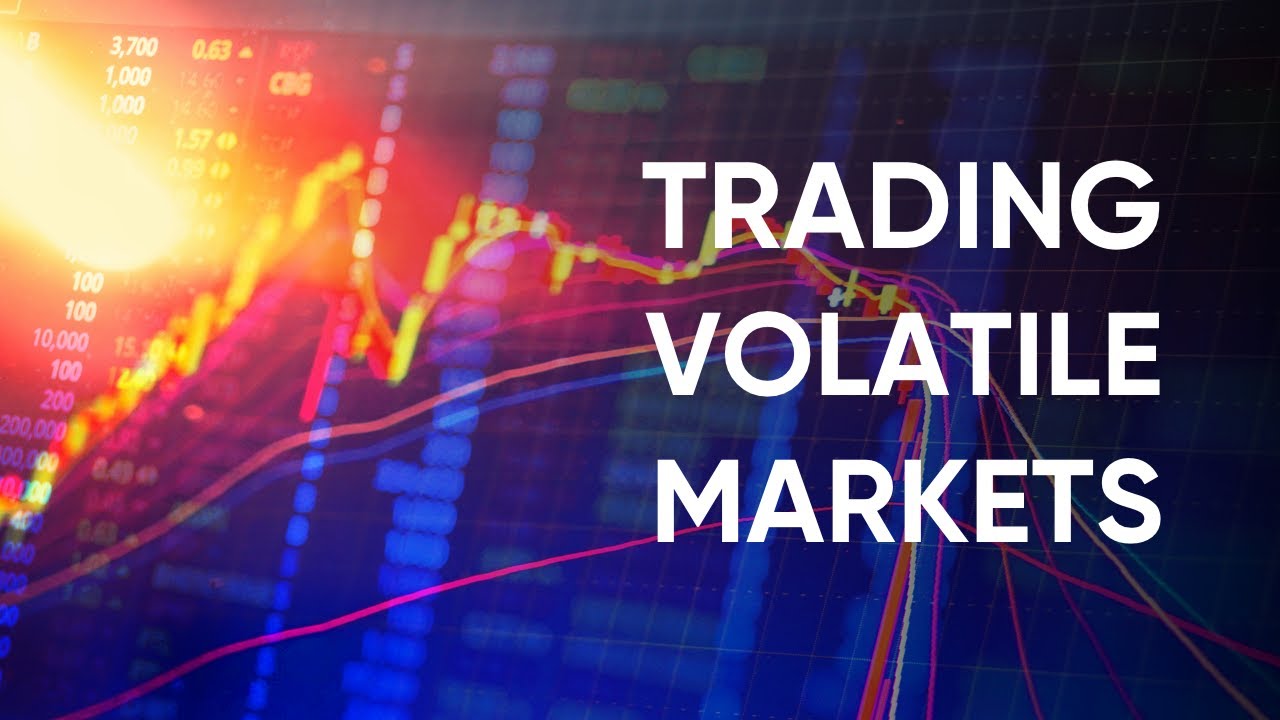In the ever-changing world of finance, where prices rise and fall in the blink of an eye, one phrase captures the curiosity of both seasoned investors and beginners alike — “volatile market.” The flashing red and green charts on trading screens may seem like chaos, but behind those numbers lies a rhythm, a pattern, and most importantly, a story of value. Going beyond the charts means understanding that markets are not just about data points; they reflect psychology, perception, and long-term fundamentals that often get lost in short-term noise.
This article explores how to decode real value amid the uncertainty of volatility — looking past the candlesticks, market swings, and fear-driven headlines to uncover what truly matters in investment decision-making.
1. Understanding Volatility — The Pulse of the Market
Volatility is often seen as a villain. Investors fear it, traders chase it, and analysts debate it. But volatility is not inherently bad; it is simply a measurement of how much and how quickly prices change. In a volatile market, prices fluctuate dramatically over short periods. These fluctuations can be triggered by economic news, global events, investor sentiment, or even technological advancements.
However, volatility also represents opportunity. When markets move rapidly, it allows investors to identify mispriced assets and strategic entry points. Think of volatility as the heartbeat of the market — too slow, and there’s stagnation; too fast, and panic ensues. But within that rhythm lies potential for those who can read between the lines.
2. Beyond Price Movements — The Value Narrative
Charts show what happened — but not why it happened. Price movements are the surface-level reactions of a deeper story unfolding underneath. True value investing begins with understanding this narrative. Why did investors lose confidence in a company? What global forces are shaping the demand for certain commodities? Why is one cryptocurrency suddenly surging while another collapses?
The key lies in differentiating price from value. Price is what you pay; value is what you get. When markets become volatile, prices often move away from underlying fundamentals. Smart investors see this dislocation as an opportunity rather than a threat.
For example, during the 2020 pandemic crash, global markets plunged due to fear, but strong companies with resilient business models bounced back quickly. Those who could see beyond the panic and focus on intrinsic value reaped the rewards.
3. Investor Psychology — The Hidden Force Behind the Charts
If numbers tell one story, human emotion tells another. Market behavior is often driven by fear and greed — two powerful forces that amplify volatility. When prices rise, greed pushes people to buy more, believing the rally will never end. When markets fall, fear triggers panic selling, often at the worst possible time.
Understanding psychology helps decode value where others see chaos. Contrarian investors — those who go against the crowd — thrive by recognizing emotional overreactions. They buy when others are fearful and sell when others are euphoric. This mindset doesn’t come easily; it requires patience, discipline, and emotional control.
Warren Buffett famously said, “Be fearful when others are greedy and greedy when others are fearful.” That single statement captures the essence of going beyond the charts — using human behavior as a compass rather than being controlled by it.
4. Fundamentals vs. Sentiment — Striking the Balance
In a volatile market, fundamentals and sentiment often diverge. Fundamentals reflect the measurable performance of a company — revenue, profit margins, cash flow, and debt levels. Sentiment, on the other hand, reflects how investors feel about those fundamentals, which can change dramatically based on headlines or global uncertainty.
The art of decoding value lies in balancing both. A company might have strong earnings but still experience stock drops if sentiment turns negative due to external fears. Similarly, a speculative asset may skyrocket purely on hype, even when fundamentals are weak. Recognizing these mismatches helps investors identify potential opportunities — either by buying undervalued assets or avoiding overpriced ones.
5. The Role of Data — Clarity Amid Chaos
Modern markets are data-driven. From algorithmic trading to AI-powered analytics, investors have more information at their fingertips than ever before. Yet, data without interpretation can mislead. The goal is not to drown in numbers but to extract meaningful insights from them.
Going beyond the charts means interpreting data contextually. A single earnings report, for instance, might show a temporary drop in profit, but understanding the broader strategy — perhaps the company is reinvesting heavily in future growth — changes the narrative completely.
Data tells what happened, but context reveals why it matters.
6. The Global Web — Interconnected Markets and Ripple Effects
In today’s interconnected world, no market exists in isolation. A policy decision in the U.S. can influence currency values in Asia, commodity prices in Africa, or tech stocks in Europe. The global economy functions like an intricate web, where every movement creates ripples elsewhere.
Understanding these connections helps investors decode value more effectively. For example, when oil prices rise, transportation and manufacturing costs increase, affecting corporate margins across industries. Similarly, interest rate changes by the Federal Reserve can strengthen the U.S. dollar and impact emerging markets.
A true value decoder looks beyond local trends and reads the global map — understanding how one event influences another.
7. The Time Horizon — Short-Term Noise vs. Long-Term Signal
One of the biggest traps investors fall into is confusing short-term noise with long-term trends. Volatility can make daily movements seem catastrophic, but zooming out often tells a different story. What looks like a crash today might simply be a correction on the path to future growth.
Long-term investors understand that time is the greatest equalizer. Quality companies, sound investments, and strong economies tend to recover and grow over time. The key is to align your investment horizon with your goals. Traders chase short-term profits; investors build long-term value.
As the saying goes, “In the short run, the market is a voting machine, but in the long run, it’s a weighing machine.” That means short-term volatility is driven by popularity, but long-term value is driven by substance.
8. Innovation and Adaptation — Decoding the Future of Value
The market of tomorrow will look vastly different from today’s. Artificial intelligence, blockchain, renewable energy, and digital finance are redefining how value is created and perceived. Investors who understand these shifts can spot value before it becomes mainstream.
Consider how technology companies transformed from speculative bets to trillion-dollar giants in just a decade. Early investors who saw beyond the charts — focusing on innovation, scalability, and societal trends — captured exponential growth.
Similarly, sustainable investing (ESG) has evolved from a niche concept to a central pillar of modern portfolios. Understanding future value means reading the signs of change and positioning yourself before the crowd does.
9. Risk Management — The Shield Against Uncertainty
Decoding value isn’t just about finding opportunities; it’s also about managing risk. Volatility amplifies both gains and losses, so protecting capital is crucial. Diversification, stop-loss orders, and hedging strategies can help minimize downside exposure.
Risk management is not about avoiding loss altogether — that’s impossible. It’s about ensuring that no single event can derail your long-term goals. Smart investors view risk as a companion, not an enemy. By understanding it, they can move confidently through uncertainty.
10. Learning from History — Patterns Repeat, Lessons Remain
Market history is full of booms and busts — the dot-com bubble, the 2008 financial crisis, the crypto crashes, and the pandemic rebound. Each event was unique, but the underlying psychology was often the same: overconfidence, speculation, panic, and recovery.
Studying these cycles helps investors anticipate future patterns. History doesn’t repeat exactly, but it rhymes. By looking beyond short-term turbulence and learning from past mistakes, one can better recognize when markets are driven by emotion rather than logic.
11. The Human Element — Wisdom Beyond Algorithms
In an age dominated by algorithms and machine learning, human intuition still holds value. Machines can analyze data faster than any human, but they lack the ability to interpret human behavior, cultural shifts, and moral values that often shape market trends.
A seasoned investor combines analytical precision with emotional intelligence. They understand that behind every stock price is a company, a workforce, and a vision. Decoding value requires seeing the human story that drives the numbers — the innovation, resilience, and ambition that fuel growth.
12. Building Your Own Framework — The Roadmap to Value
To go beyond the charts, investors need a personal framework — a system for evaluating opportunities consistently. This includes:
- Understanding your risk tolerance: How much volatility can you handle emotionally and financially?
- Analyzing intrinsic value: Study fundamentals like cash flow, debt, and competitive advantage.
- Following macro trends: Stay aware of interest rates, inflation, and geopolitical events.
- Maintaining discipline: Stick to your plan, even when the market tests your patience.
A framework provides stability in chaos — a compass to navigate the storm.
13. Conclusion — Seeing Clarity in the Chaos
Decoding value in a volatile market is not about predicting the next price movement. It’s about understanding the deeper layers that influence those movements — psychology, fundamentals, global events, and innovation. It’s about recognizing that value is not found in the charts alone but in the stories, strategies, and strengths that lie behind them.
Markets will always fluctuate. Headlines will always scream panic or euphoria. But investors who can look beyond the noise — who can separate emotion from logic and short-term swings from long-term potential — will find clarity amid the chaos.
In essence, going beyond the charts means becoming a student of both numbers and narratives, data and discipline, markets and minds. Those who master that balance don’t just survive volatility — they thrive in it.









